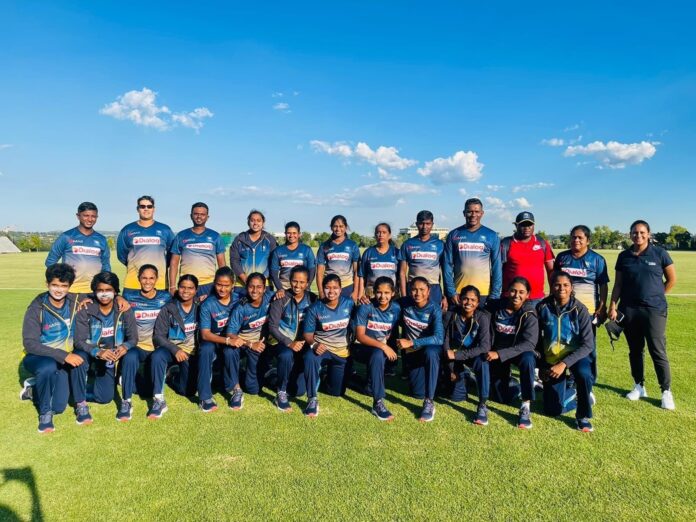The inaugural U19 Women’s T20 World Cup heats up with a dozen teams moving to the Super Six stage to battle it out for a semi-final spot.
From Bangladesh’s opening day victory over Australia, to Rwanda’s win over regional rivals Zimbabwe, First Round results point to a competitive Super Six phase of the tournament.
Carry-over points, net run rate, how the fixtures work and much more – here is everything you need to know ahead of the Super Six phase that starts on January 21.
How the Super Six phase works
The 12 teams progressing through the First Round of the tournament move into two groups of six, with teams first to third in Group A and Group D making up Super Six Group 1, and Group B and Group C teams moving into Super Six Group 2.
Points accumulated in the First Round against other teams to progress to the Super Six phase are important as they carry over into the next section of the tournament. Points earned in matches involving the fourth-place finisher in each First Round group do not carry over to the Super Six stage.
Here are the tables of both Super Six groups with carry-over points included.
Group 1 – Super Six Standings – results and points carried over from group stage
| Team | Played | Wins | Losses | Points | NRR |
| India (D1) | 2 | 2 | 0 | 4 | 4.083 |
| Bangladesh (A1) | 2 | 2 | 0 | 4 | 0.691 |
| Australia (A2) | 2 | 1 | 1 | 2 | 2.409 |
| South Africa (D2) | 2 | 1 | 1 | 2 | 0.457 |
| Sri Lanka (A3) | 2 | 0 | 2 | 0 | -2.950 |
| UAE (D3) | 2 | 0 | 2 | 0 | -4.175 |
Group 2 – Super Six Standings – results and points carried over from group stage
| Team | Played | Wins | Losses | Points | NRR |
| New Zealand (C1) | 2 | 2 | 0 | 4 | 6.826 |
| England (B1) | 2 | 2 | 0 | 4 | 4.775 |
| Pakistan (B2) | 2 | 1 | 1 | 2 | -0.973 |
| West Indies (C2) | 2 | 1 | 1 | 2 | -2.126 |
| Ireland (C3) | 2 | 0 | 2 | 0 | -2.653 |
| Rwanda (B3) | 2 | 0 | 2 | 0 | -3.917 |
How Super Six fixtures are decided
Each team plays two matches during the Super Six phase with these fixtures determined by their First Round finishing positions.
The Super Six teams avoid playing the team that finished in the same position as them in the opposing First Round group – making it advantageous to finish as high as possible in the First Round.
Each team also avoids playing the teams from their First Round group again in the Super Six stage.
Let’s take Super Six Group 1 as an example, with fixtures and carry-over points already determined:
Bangladesh (first in Group A) will play South Africa (second in Group D) and the UAE (third in Group D) in their two Super Six matches, while avoiding India (first in Group D).
Sri Lanka (third in Group A) must face India and South Africa, first and second in Group D respectively, while avoiding the UAE after they finished third in Group D.
This means that in the other Super Six group, the teams who finished first in First Round Group B and Group C do not play each other, and instead take on second and third from the other First Round group.
How semi-final qualifiers are decided
The top two teams from each Super Six group then progress to the semi-finals.
The team to top Group 1 will take on second place in Group 2, with the runner-up in Group 1 to take on the Group 2 table-topper.
Should teams finish on equal points in the Super Six groups, the teams to progress to the semi-finals will be decided by “the greatest number of wins in its Super Six Group” as per tournament playing conditions. If teams are still equal, the team with the higher net run rate progresses.
This means that First Round table-toppers still have little margin for error. As a potential scenario, Australia could beat India and UAE to move to six points, while India, even with a win over Sri Lanka, would also be on six points.
The teams’ would then have their fate in Bangladesh’s hands: two wins for Dish Biswas’ side would put them top of the group, leaving India and Australia subject to the tie-breakers.
When does the Super Six phase start?
The five-day stretch for the Super Six stage begins on January 21, with all the matches held in Potchefstroom.
The remaining four teams stay in Potchefstroom for semi-finals on January 27, with the Final also held there on January 29.
Placement playoffs to decide bottom four finishers
It is not the end of the tournament for the teams that finished bottom of each of the First Round groups, as they move to a playoff phase of their own to decide the final placings from 13th to 16th on January 20.
Group A’s fourth place finisher USA will take on Scotland, while the fourth-placed finishers of groups B and C, Zimbabwe and Indonesia, meet the same day. Both matches will be held in Benoni.

















